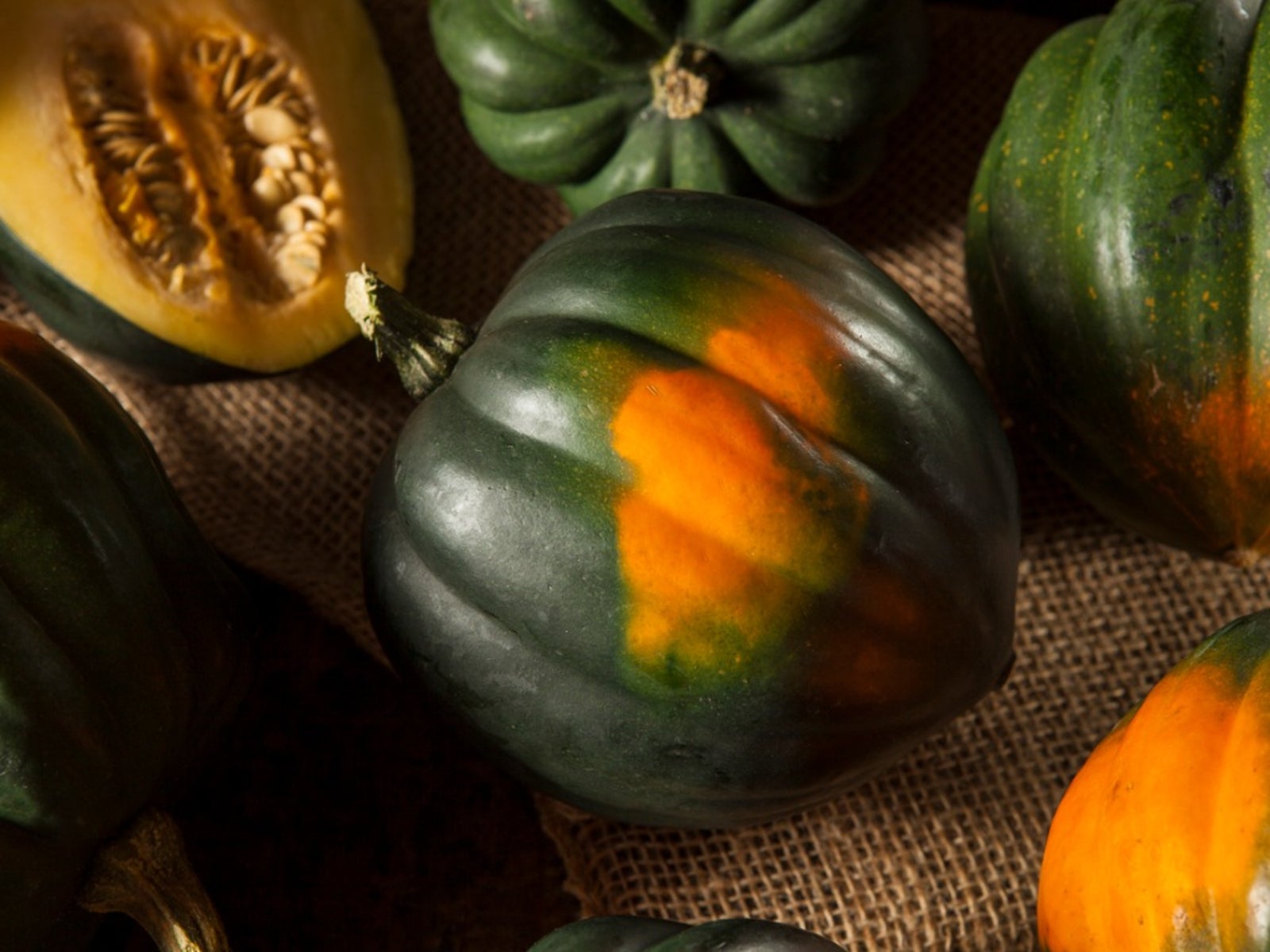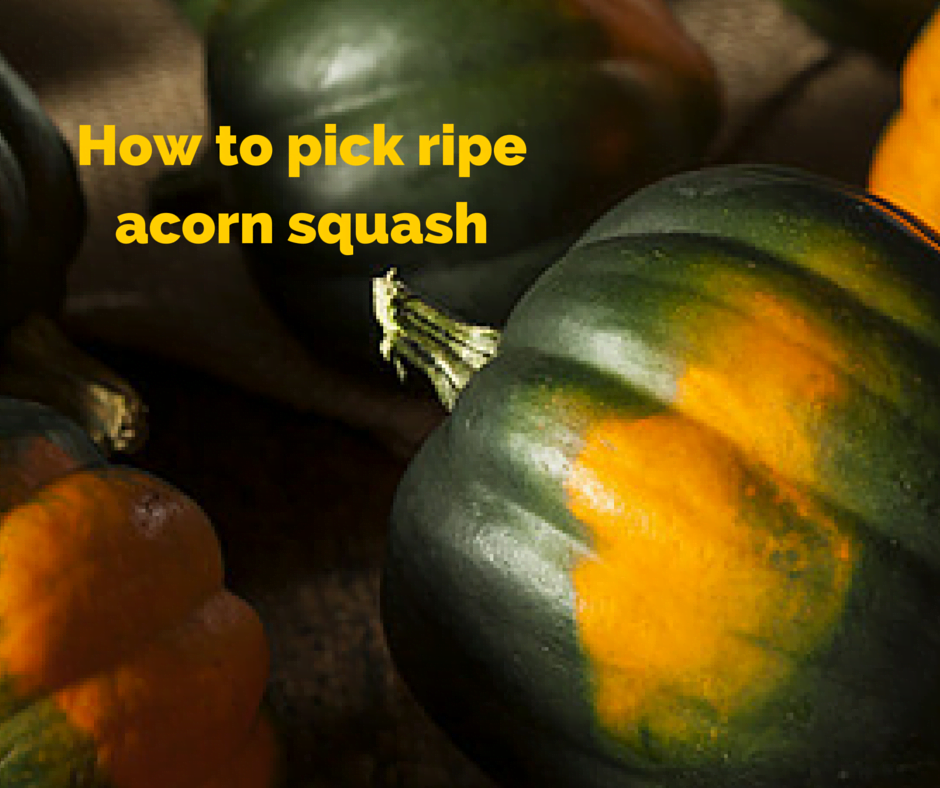Are you a fan of acorn squash? If so, you’re in for a treat as we uncover the secrets to picking the perfect acorn squash. From its unique shape to its nutty flavor, acorn squash is a versatile and delicious vegetable that deserves a place on your dinner table. But when is the right time to harvest this autumn delight? And what are the signs that indicate it’s ready to be plucked from the vine? In this article, we’ll explore the best practices for picking acorn squash, ensuring you enjoy the sweetest and most succulent bites all season long.

When to Pick Acorn Squash
Determining the Right Time
Knowing the right time to pick acorn squash is crucial to ensuring that you enjoy the maximum flavor and sweetness of this delicious vegetable. Acorn squash should be picked when it reaches full maturity, which is typically around 80-100 days after planting. It is important to wait until the squash has fully ripened on the vine to ensure that the flavors have fully developed and that the flesh is tender and sweet.
To determine if the acorn squash is ready to be picked, there are a few key factors to consider. One of the first signs is the rind color, as an acorn squash should have a deep and rich color when it is fully ripe. Additionally, tapping the squash can give you a clue about its readiness. A ripe acorn squash will sound hollow when tapped, indicating that it is ready to be harvested. Lastly, the harvest season should also be taken into account, as acorn squash is typically ready to be picked in the fall when the vines start to die back.
Checking the Rind Color
The color of the rind is an important indicator of the ripeness of the acorn squash. A fully matured acorn squash will have a rich, dark green color. As the squash ripens, the color of the rind will deepen and become more vibrant. The deep green color indicates that the squash has absorbed enough nutrients from the vine and has reached its peak maturity.
When inspecting the rind color, make sure to look for any discoloration or spots. These can be a sign of overripeness or rotting, which means the squash should not be harvested. It is important to avoid picking acorn squash with pale or light green rinds, as they are not fully mature and may lack the desired flavor and sweetness.
Tapping the Squash
Another method to determine the readiness of an acorn squash is by tapping it. When you tap a fully matured acorn squash, it should produce a hollow sound. This indicates that the flesh inside is firm and dense, which is a desirable characteristic. However, if the squash produces a dull or thud-like sound, it may mean that the flesh has started to deteriorate and is no longer of optimal quality.
When tapping the squash, make sure to use a gentle yet firm touch. Avoid using excessive force as it may cause damage to the squash. Remember, a hollow sound is a positive sign, but a dull sound should prompt you to leave the squash on the vine for a little longer to allow it to fully ripen.
Considering the Harvest Season
The time of the harvest season is an essential factor to consider when picking acorn squash. Acorn squash plants thrive in cooler temperatures and are typically ready to be harvested in the fall, often around September or October. The harvest season varies slightly depending on the specific variety of acorn squash and your location.
To ensure that you pick the acorn squash at the right time, closely monitor the vines for signs of maturity. As the harvest season approaches, the vines will start to die back, and the fruits will become fully matured. Don’t be tempted to pick the squash too early, as it needs enough time on the vine to develop a delicious flavor and sweet taste. Waiting until the harvest season arrives will result in an acorn squash that is at its peak in terms of taste and quality.
How to Pick Acorn Squash
Garden Preparation
Before picking acorn squash, it’s important to ensure that your garden is properly prepared. Acorn squash plants require well-drained soil and plenty of sunlight to thrive. Ensure that the soil is loosened and enriched with organic matter before planting the squash seeds or seedlings.
Consider planting acorn squash in raised beds to improve drainage and provide better air circulation, which can reduce the risk of diseases. Providing support for the vines, such as trellises or cages, can also help prevent the squash from rotting on the ground.
Using Proper Tools
To pick acorn squash without damaging the fruit or the vine, it is essential to use the right tools. A sharp, clean garden knife or pruners are commonly used for harvesting. Before using these tools, make sure they are clean and sanitized to prevent the spread of any potential diseases.
When using a garden knife or pruners, carefully cut the stem of the squash about an inch above the fruit. This helps to prevent any damage to the squash or the remaining vine, allowing the plant to continue producing more fruits.
Examining the Stem
Examining the stem of the acorn squash can provide important insights into its maturity and readiness for harvest. A mature squash will have a dried and corky stem. If the stem is still green and pliable, it indicates that the squash is not fully ripe and should be left on the vine for a bit longer.
When examining the stem, be sure to look for any signs of mold, rot, or disease. Picking a squash with an unhealthy stem can affect the flavor and quality of the vegetable. Additionally, ensure that the stem is intact and hasn’t been damaged during the harvesting process.
Avoiding Bruising
To maintain the quality and extend the shelf life of your freshly picked acorn squash, it is crucial to avoid any bruising or cuts during the harvesting process. Handle the acorn squash gently to prevent any unnecessary damage.
When picking the squash, hold it by the fruit and avoid putting excessive pressure on the rind. A firm grip will help prevent any accidental drops or falls. Transport the squash carefully to avoid bumping or colliding with other objects or vegetables.
Storing Acorn Squash
Proper storage is essential to preserve the freshness and flavor of acorn squash after it has been picked. Acorn squash can be stored for several months if done correctly. Keep in mind that the shelf life may vary depending on the specific variety and maturity of the squash.
Store acorn squash in a cool, well-ventilated area with a temperature range of 50-55°F (10-13°C). Avoid exposure to direct sunlight as it can cause premature ripening or spoilage. Keep the squash in a single layer to prevent any unnecessary pressure that can lead to bruising.
Regularly inspect the stored squash for signs of decay or rotting. Remove any damaged or spoiled squash immediately to prevent the spread of diseases. With proper storage, your acorn squash can stay fresh for an extended period, allowing you to enjoy its delicious flavor throughout the fall and winter months.
In conclusion, picking acorn squash at the right time is crucial to enjoy its maximum flavor and sweetness. By checking the rind color, tapping the squash, and considering the harvest season, you can determine the ideal time for harvesting. Additionally, proper garden preparation, the use of proper tools, examining the stem, and avoiding bruising are important steps to ensure a successful harvest. Lastly, storing acorn squash in appropriate conditions will help maintain its quality and allow for prolonged enjoyment. Now that you have a comprehensive understanding of when and how to pick acorn squash, you can confidently grow and harvest this nutritious and delicious vegetable.




